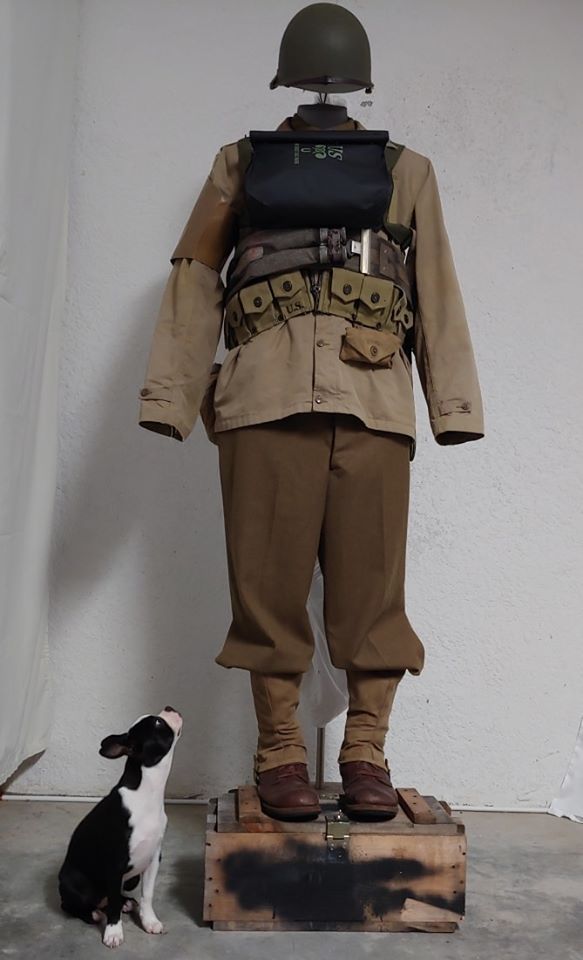D-Day
The Normandy landings were the landing operations and associated airborne operations on Tuesday, 6 June 1944 of the Allied invasion of Normandy in Operation Overlord during World War II. Codenamed Operation Neptune and often referred to as D-Day, it was the largest seaborne invasion in history.
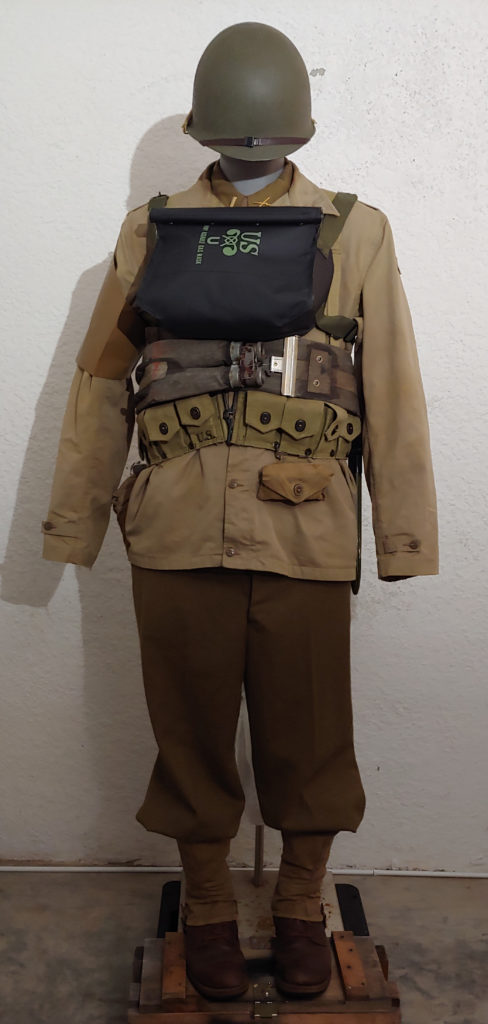
(Note. This is a reproduction uniform worn by a reenactor who is 6.5 on a smaller mannequin thus the uniform may appear larger than what your average soldier was issued during the time.)
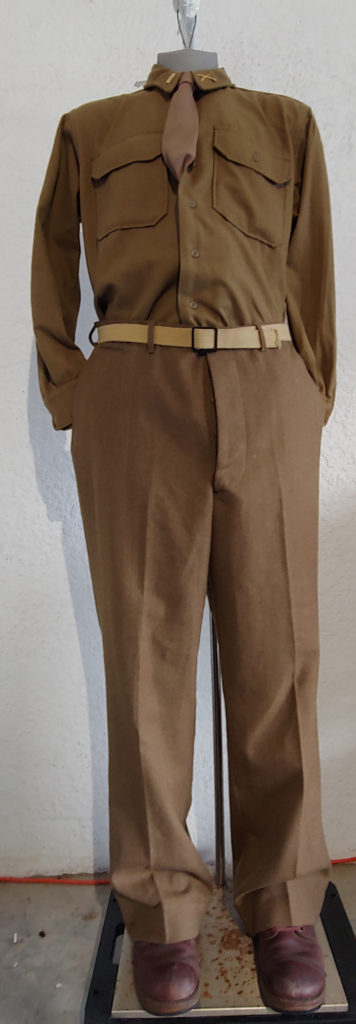
The Basics
We’ve often said on the podcast that “We landing on the beach in our Sunday best.”
The basic infantry uniform consist of a wool button up shirt, wool trousers, boots, belt, and a tie.
The issue enlisted men’s winter service uniform in 1941 consisted of a wool Shirt,which featured two patch pockets and no shoulder straps, were either olive drab shade No. 33. 10.5 oz wool flannel or 8.2 oz khaki shade No. 1 cotton chino cloth. Either shirt could be worn under the coat; however, the cotton shirt could not be worn as an outer garment with the wool trousers. Whenever a shirt was worn as an outer garment the necktie was tucked between the second and third button of the shirt.[2] The initial shirt had a standup collar like a typical dress shirt. In 1941 the shirt was redesigned with the collar band removed so the collar would lay flat when worn in the field.[3][4] In 1941 the wool necktie for the winter uniform was black and the summer necktie was khaki cotton.[5] In February 1942 a universal mohair wool necktie in olive drab shade 3 replaced both previous neckties. The OD shade 3 necktie was shortly superseded by a khaki shade 5 cotton–wool blend necktie. The single color khaki shade 5 necktie was mandated for both summer and winter service uniforms.[6][7] An overcoat of OD shade 33 Melton wool was worn in cold weather.
M1941 Field Jacket
The Jacket, Field, O.D. (also unofficially known as O.D. Cotton Field Jacket, Parsons Jacket, M1938 or M1941) is a field jacket that was used by US Army soldiers, most famously during the beginning of World War II. In 1941 it started to be phased in as a replacement for the wool four-pocket service coat of World War I. M1941 is usually recognized as a symbol of the World War II American G.I.. The jacket was made in a light shade of olive drab called O.D. number 2.
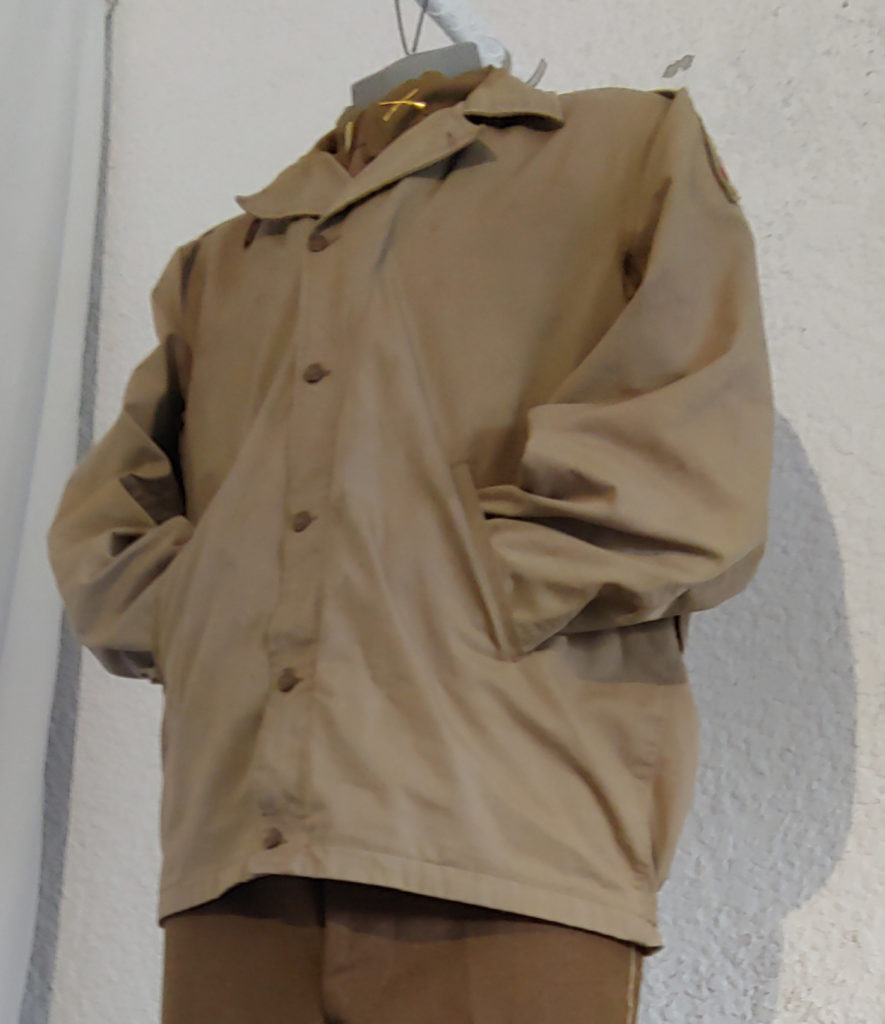
info from Wikipedia
Leggings
Since the late 19th century, soldiers of various nations, especially infantry, often wore leggings to protect their lower leg, to keep dirt, sand, and mud from entering their shoes, and to provide a measure of ankle support.
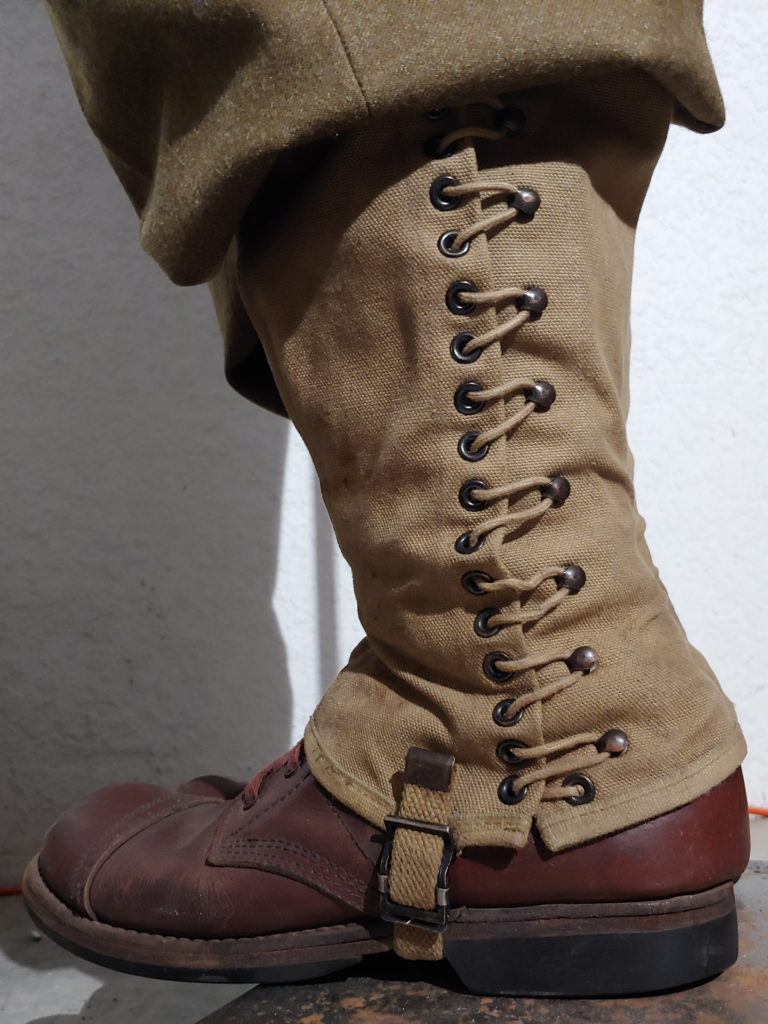
Canvas leggings fastened with buckles or buttons, usually secured at the bottom with an adjustable stirrup that passed under the sole of the shoe, just in front of the heel. The soldier placed the leggings around his calf with the buttoned side facing out and adjusted them and the strap to achieve a proper fit.
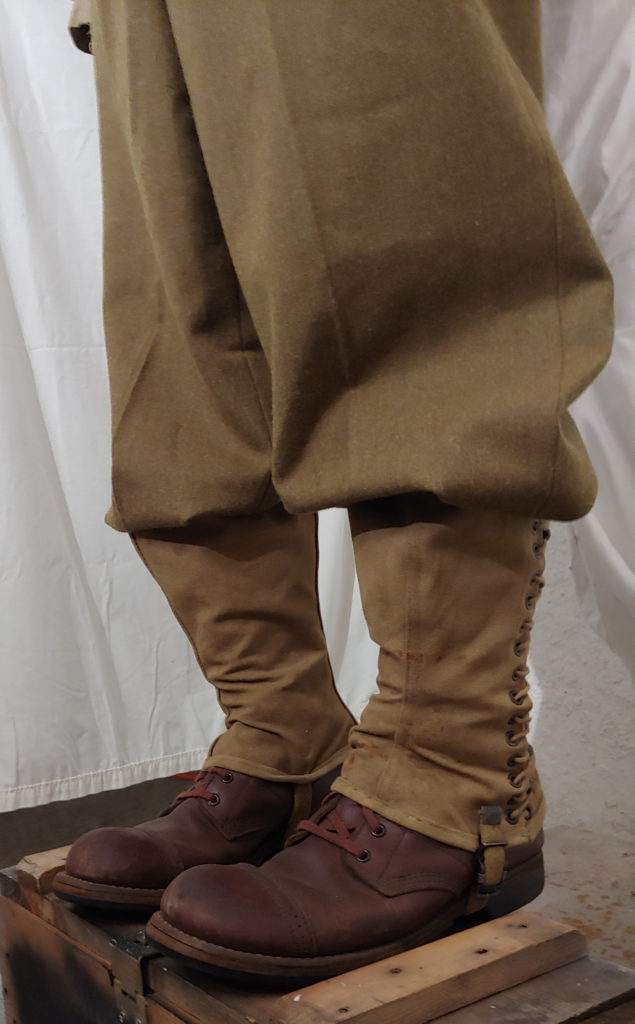
Leggings typically extended to mid-calf and had a garter strap to hold them up and were secured with a tie just below the knee. Military leggings extended to the bottom of the knee and buttoned to the bottom button on the knee-breeches. They are sometimes confused with gaiters, which extend to the high ankle and are worn with full leg trousers.
(Wikipedia)
